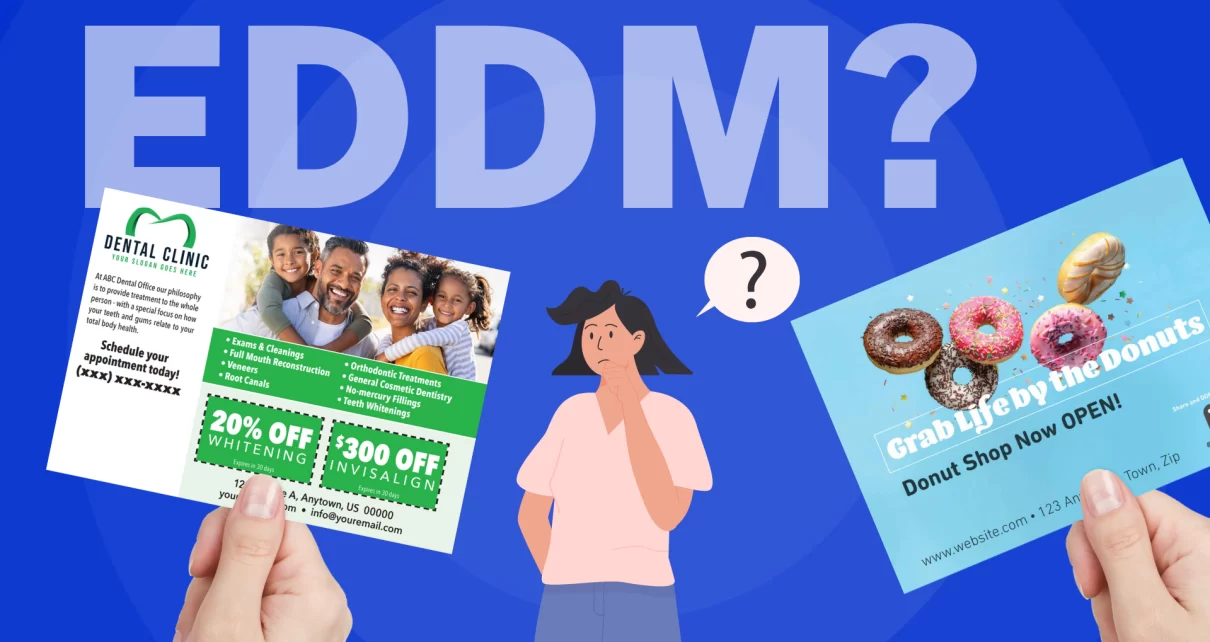USPS Every Door Direct Mail (EDDM) has gained popularity as a marketing tool for many businesses. On the surface, it seems like an excellent way to reach every household in a specified area without needing a mailing list. But like every service, EDDM has its drawbacks. This article will explore some downsides of USPS EDDM to help you make an informed decision about using this service.
Understanding USPS EDDM
Before delving into the drawbacks, it’s crucial to understand what USPS EDDM is. Every Door Direct Mail, offered by the United States Postal Service (USPS), allows businesses to send promotional mailings to specific neighborhoods or routes without needing individual addresses.
- Limited Targeting Capabilities
Lack of Specificity:
One of the primary challenges of using EDDM is the lack of precise targeting. With EDDM, businesses target mail routes, not individual demographics. For some businesses, this broad approach works. For others, it can result in wasted resources, as mailers might end up in the hands of uninterested parties.
No Personalization:
In today’s age of personalized marketing, EDDM does not allow for tailored messaging for specific audiences. Personalized content often has a higher conversion rate than generic messages, which can be a significant downside for some campaigns.
- Potentially High Costs
Upfront Expenditure:
While the per-piece cost for EDDM might seem attractive, the overall expenditure can add up, especially when sending to large areas. Costs include printing, design, and postage, which can strain smaller marketing budgets.
Wasted Resources:
Regardless of the likelihood of conversion, sending mailers to every door can lead to wasted resources. If only a small fraction of recipients are interested, a lot of waste is involved, both in terms of money and paper.
- Limited Flexibility
Size Restrictions:
EDDM has specific size requirements for mailers. If your design doesn’t fit within these guidelines, it either has to be altered, potentially compromising the message, or it can’t be used for EDDM.
Content Restrictions:
There are also content restrictions. The USPS has guidelines about what can and cannot be included in EDDM mailings. This can limit creativity or the type of promotions a business might want to run.
- Time and Effort
Preparation and Bundling:
EDDM requires mailers to be bundled in specific quantities and labeled correctly. This can be time-consuming, especially for businesses that are doing large mailings.
Delivery Delays:
While USPS generally does a commendable job, there can be delivery delays. This can be problematic for time-sensitive promotions or events.
- Saturation and Diminishing Returns
Frequent Mailings:
When businesses use EDDM regularly, there’s a risk of saturation in the market. The novelty can wear off if the same households receive similar mailings frequently. As a result, recipients might become less likely to engage or even open these mail pieces.
Diminishing Returns:
Businesses that rely heavily on EDDM as their primary marketing strategy may experience diminishing returns over time. The more often a particular audience receives a marketing message, the less impactful it can become. This means that the conversion rate might decrease for each subsequent mailing unless there’s a change in strategy or messaging.
Competition Noise:
Another aspect of saturation is the possibility of your EDDM mailer being one among many. If multiple businesses in the area also use EDDM, your message might get lost in a sea of promotional content, making it harder for your business to stand out.
Conclusion
USPS EDDM can be an effective way for businesses to reach a broad audience without the intricacies of gathering individual addresses. However, it’s crucial to consider its limitations alongside its benefits. Issues like limited targeting, potential high costs, a lack of flexibility, the demands of time and effort, and the potential for market saturation and diminishing returns can influence the effectiveness of EDDM campaigns. As with any marketing strategy, businesses should evaluate their needs, audience, and goals before fully investing in EDDM. Understanding its strengths and weaknesses will ensure that the chosen marketing approach yields the best results.





